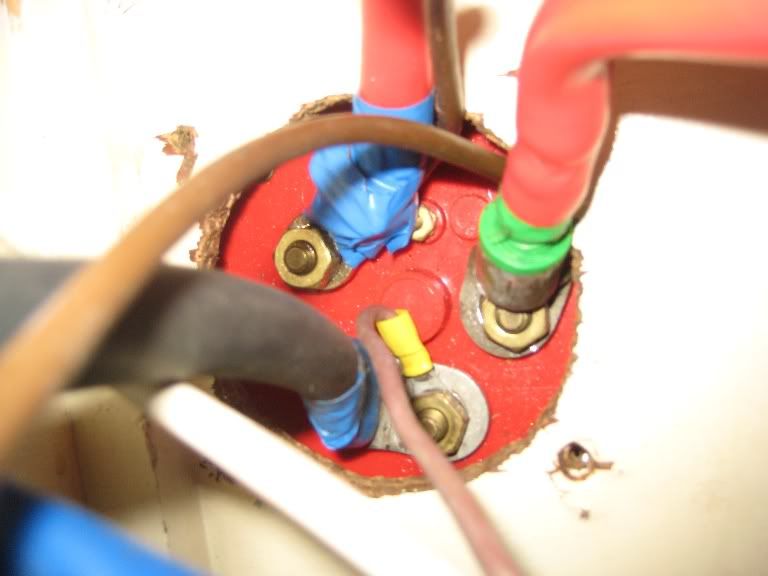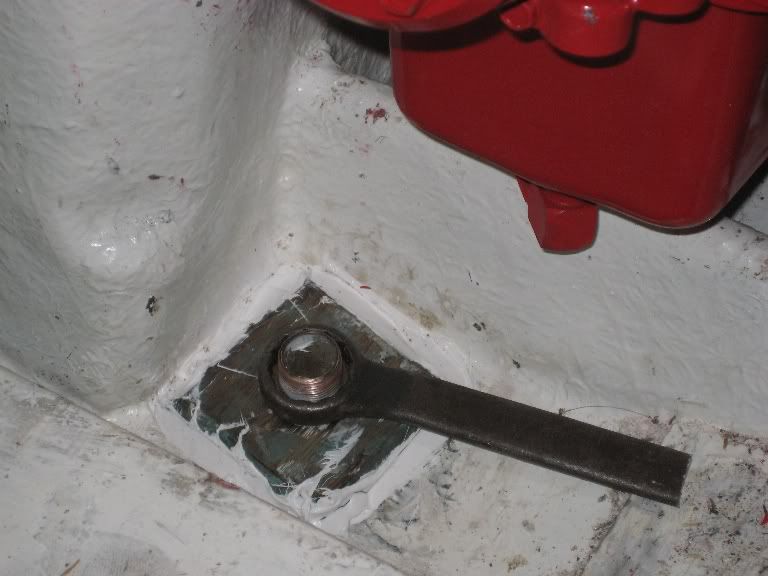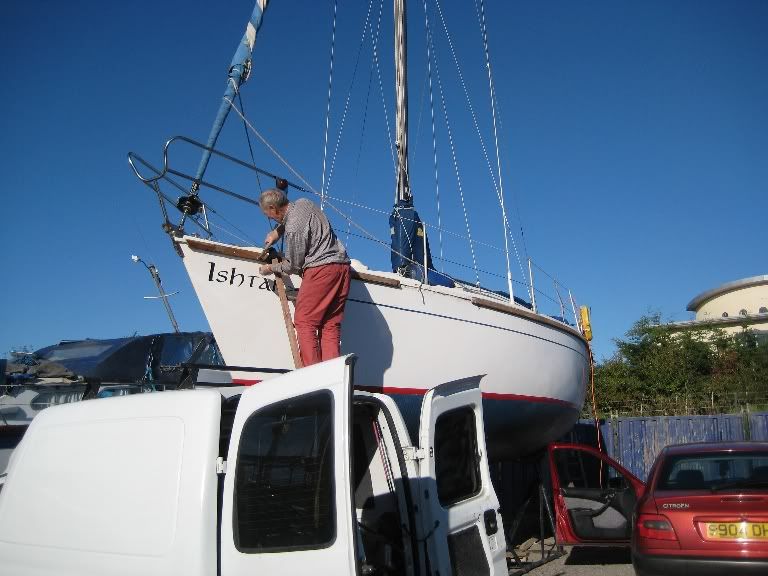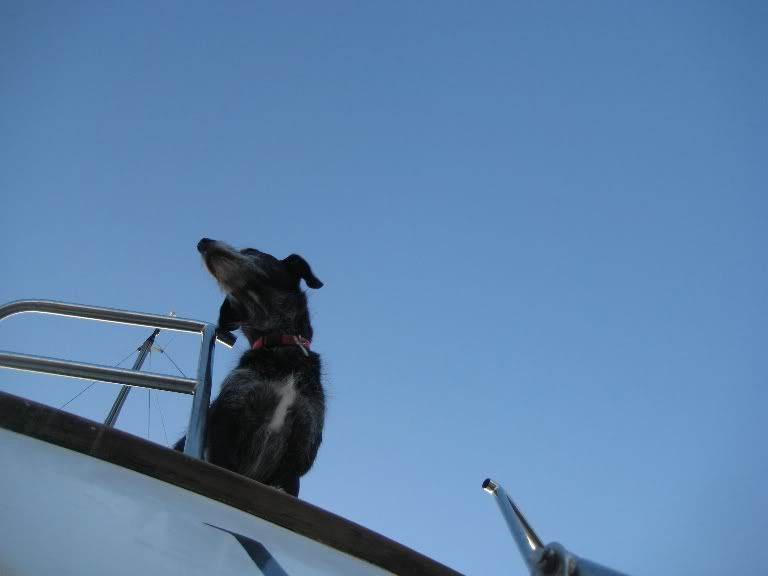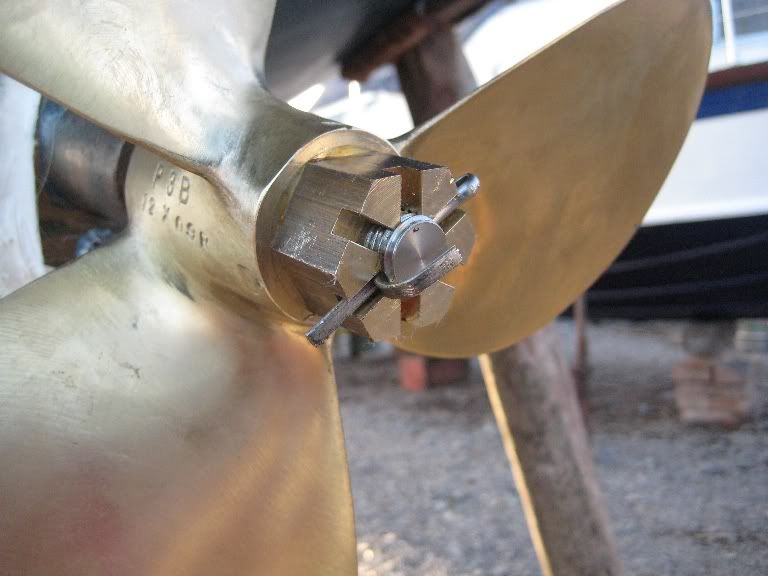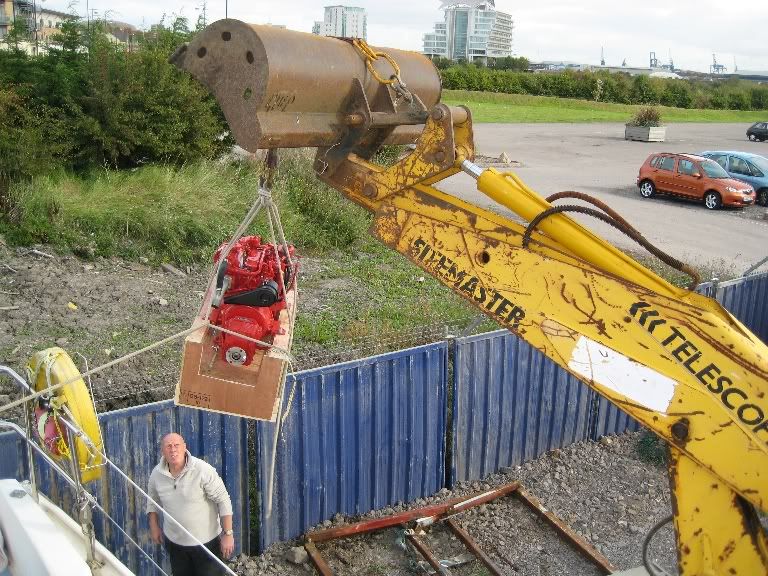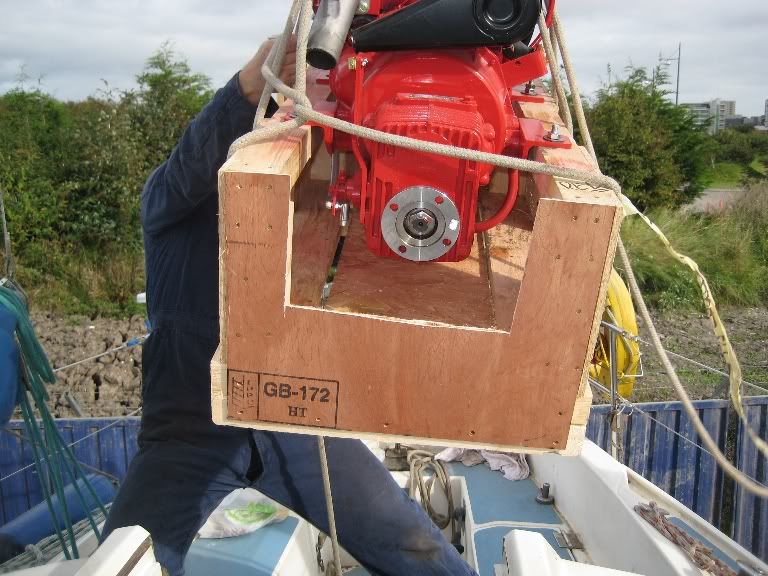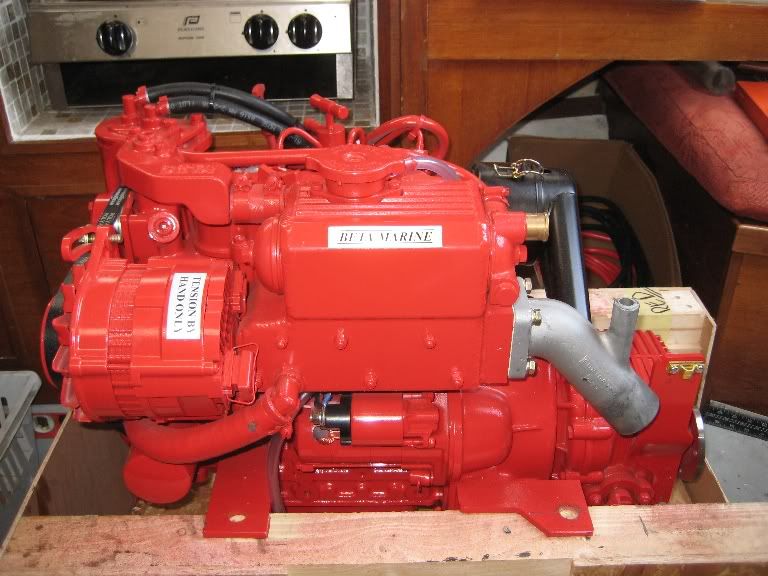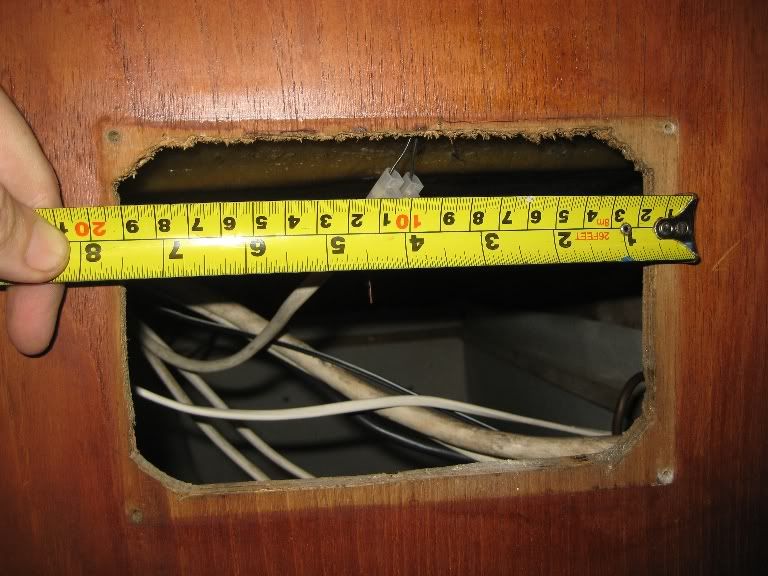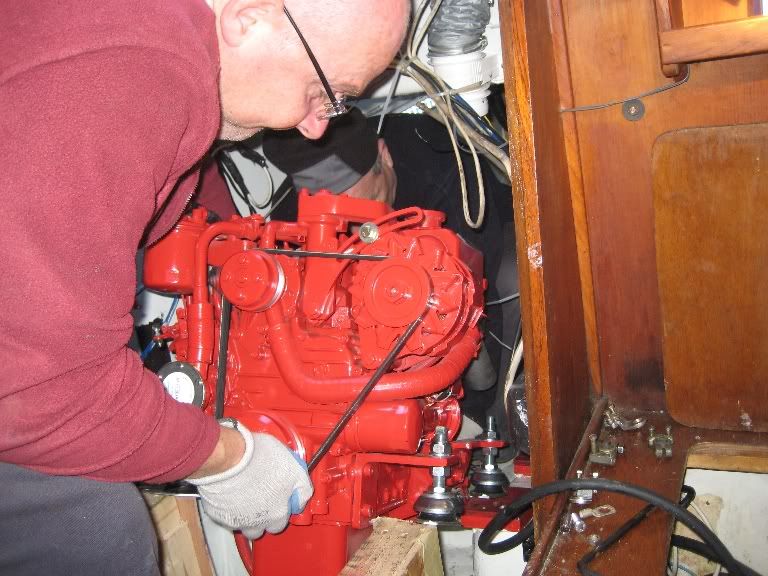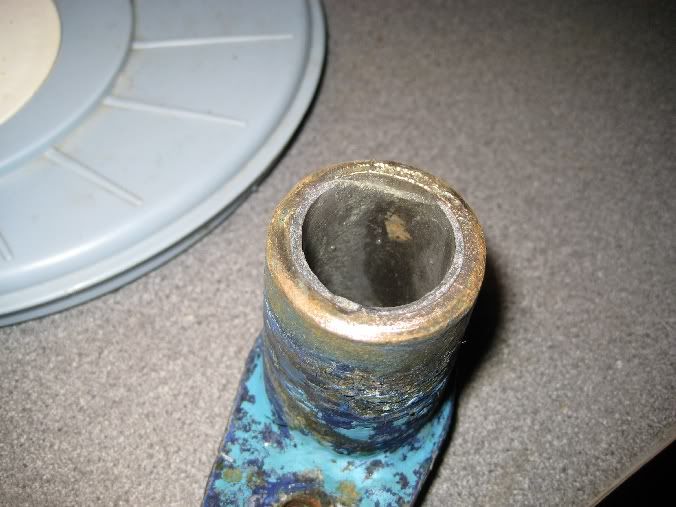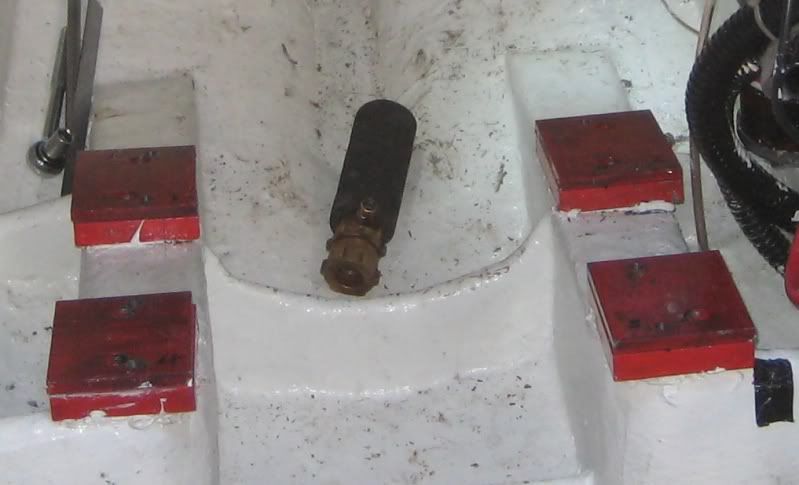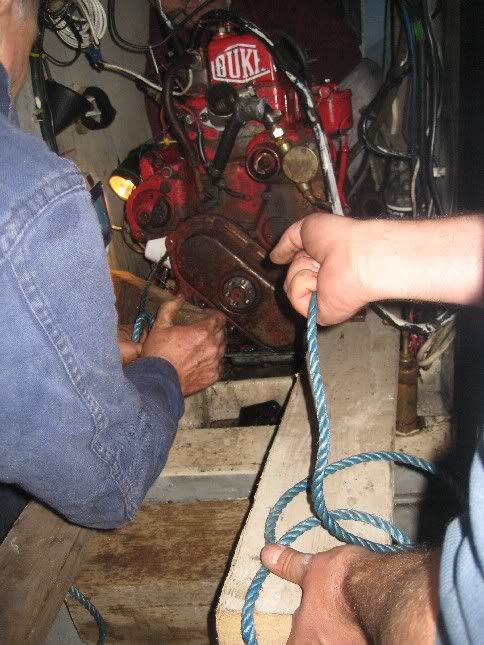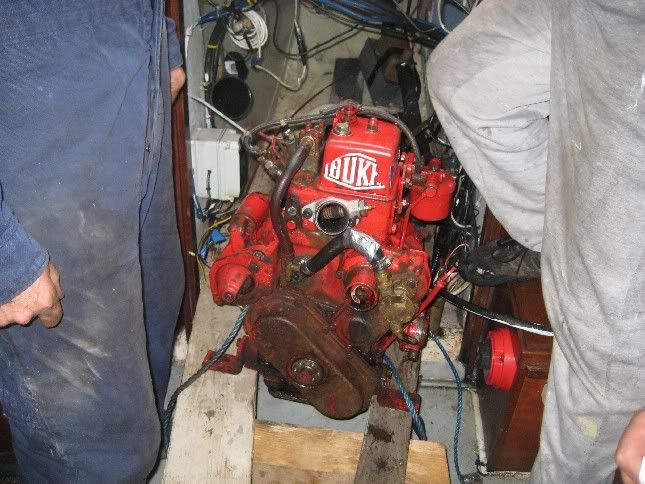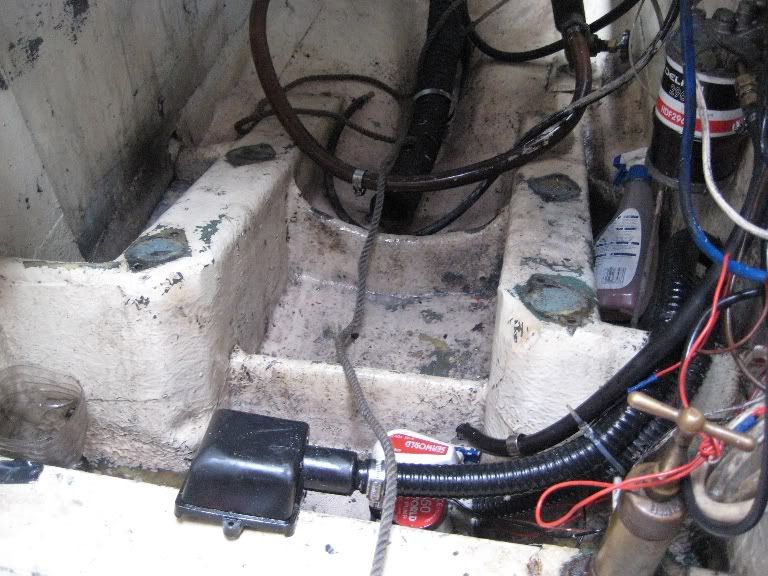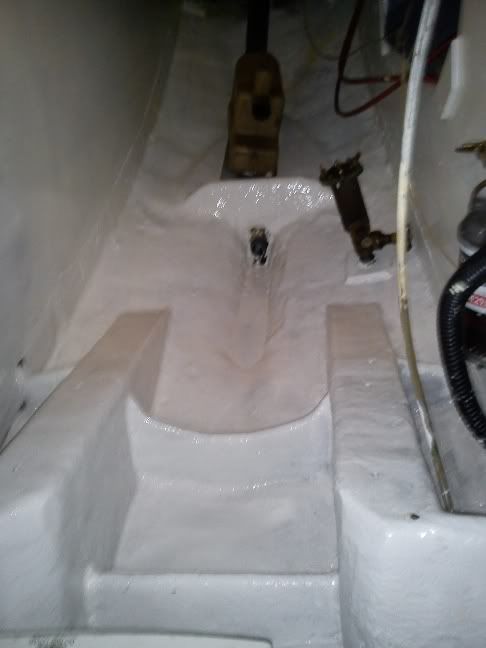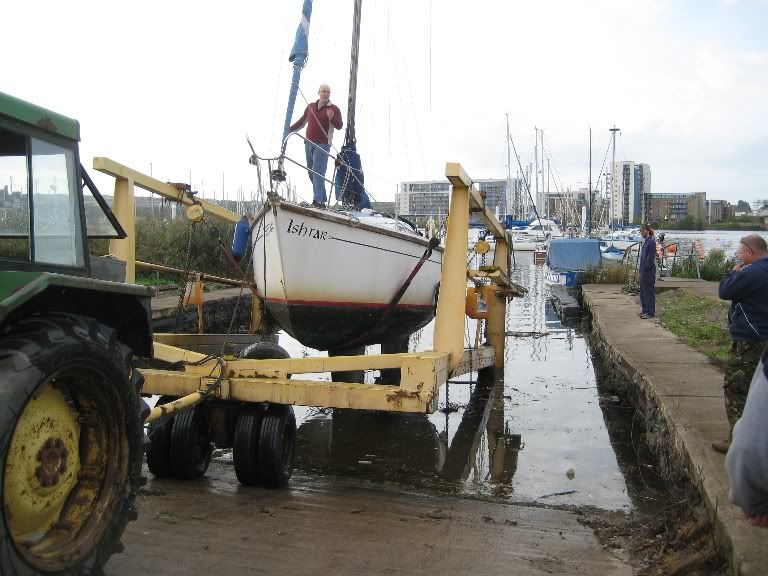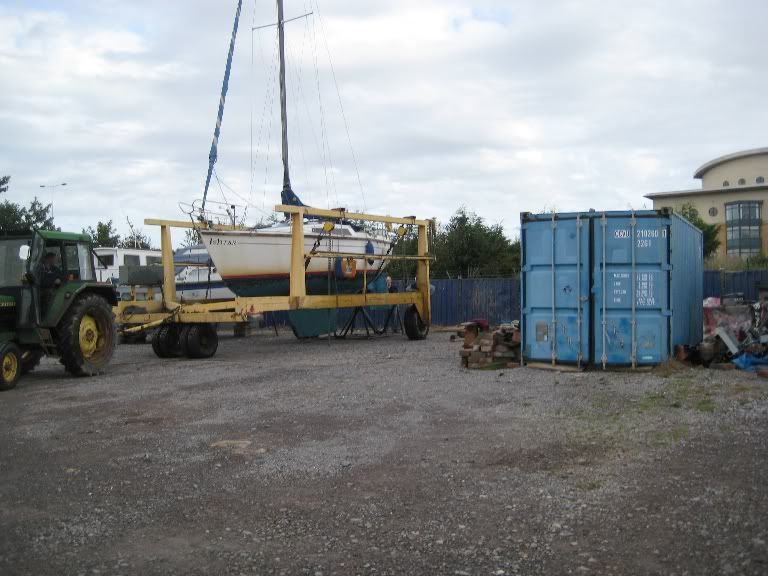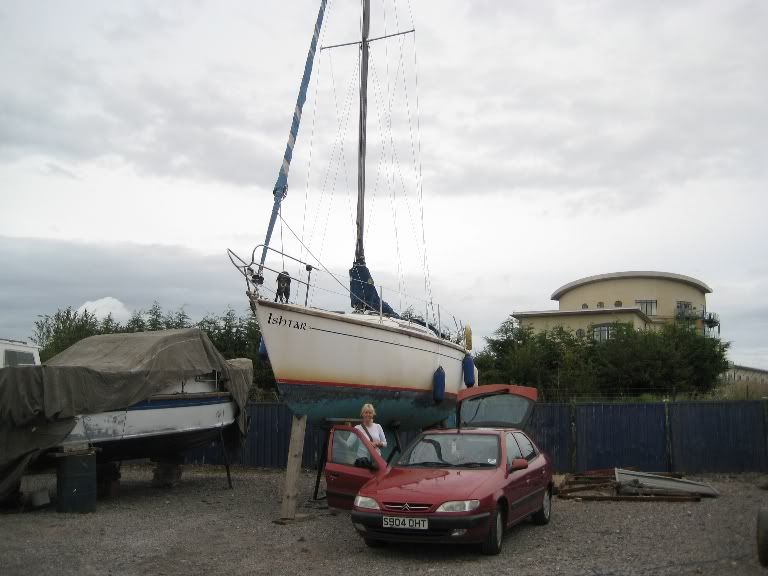[caption id="" align="alignnone" width="300" caption="Time to go"]
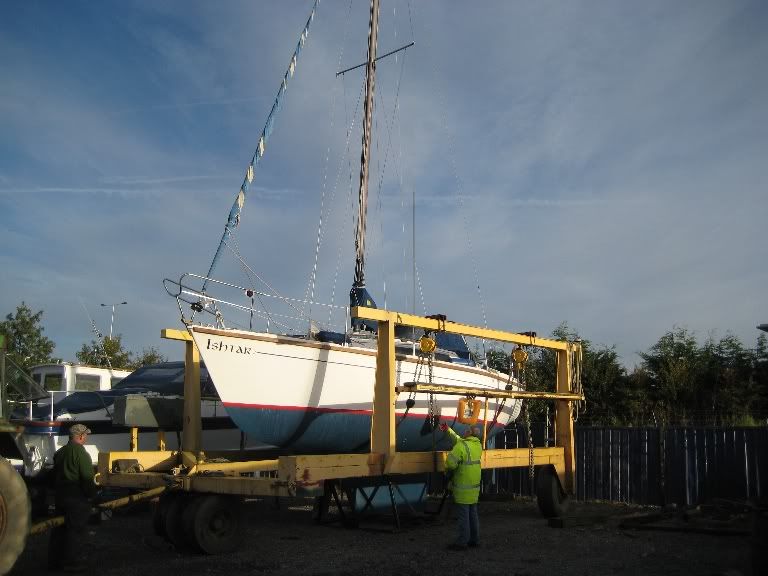 [/caption]
[/caption]I had not been there when Louise cut and fitted the new packing for the stuffing box, nor when she and Vince had fitted the new through hull fitting. With visions of water flooding into the boat, Ishtar was gently lowered down the ramp into Cardiff bay.
[caption id="" align="alignnone" width="300" caption="And in"]
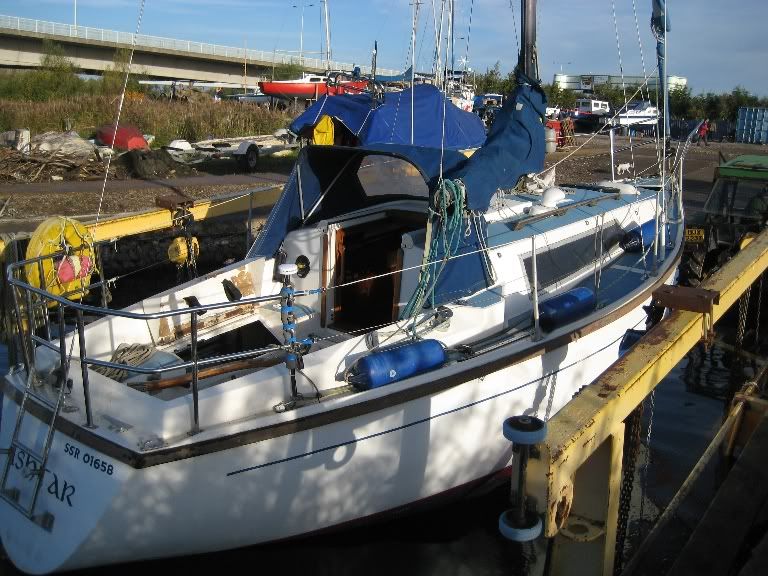 [/caption]
[/caption]Louise crawled into the engine compartment, and there was an anxious wait until , a few minutes later, she emerged through the cockpit locker with a big grin. 'Completely dry' she said. I could not believe it. I climbed aboard and checked. The tissue paper she had wrapped around all the new fitings and stern gland were bone dry. Louise had done a fantastic job.
We lef the crane and, with the help of a few friends, pulled Ishtar along the pontoon on ropes, tying her up ready to start commisioning the engine.
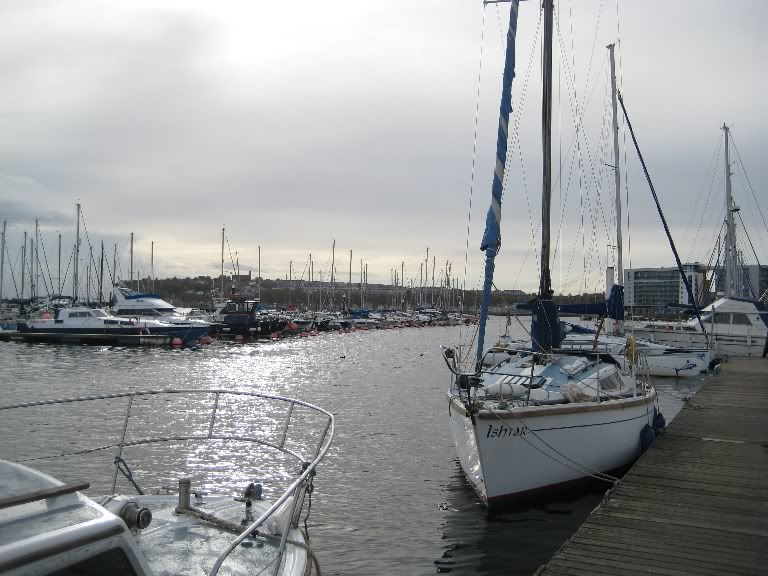
Next job. Prime the engine. I had diesel in the fuel pipe after the primary filter (water separator with glass bowl) but, try as I might, I could not get a clear flow of diesel at the secondary filter, lots of air. We spent an hour, trying with the hand operated lever on the fuel lift pump to no avail.
Eventually, I resorted to using our old oil sump pump, connected it to the end of the fuel pipe and a few quick pumps relulted in the unmistakeable bubbling of air, clearly coming from the primary filter O ring.
Rather than mess about (the filter had ony done about 20 hours) Louise replaced the filter and O rings, top and bottom. Within 2 minutes, I had a clear flow of diesel, first at the secondary filter, then at the injector pump. It was now or never.
I'd been so used to turning the key on the Bukh for 20 seconds or more, I didn't realise the engine had started immediately. It was a strange moment. We'd done it. It was in, no leaks, and purring away like a dream.
The warranty checklist required we checked for leaks, adjusted the gear linkeage to ensure the clutch was not slipping, run the engine on the pontoon for 20 minutes and then go for sea trials. We worked through the list, still expecting to find the inevitable things we'd missed or done wrongly. Couldn't find any.
Eventually I stood on the pontoon and asked Louise to slip it into forward gear, and then just into astern. The boat eased forward and then back, perfectly. I panicked slightly when I heard a loud squeaking noise, until I realised it was Louise, giggliing like a 5 year old, a huge smile on her face.
I climbed aboard, let loose the mooring lines and set off to our own pontoon berth. The travel on the throttle was around half what it was on the Bukh, and we had around twice the power, so I had no idea we were speeding along at 5 knots, creating quite a wake. The last time I had tested the Bukh, we could barely reach 4 knots flat out.
It was brilliant. A lot of friends were there on Saturday afternoon, and other boats had been launched too. It felt great, motoring up between the pontoons, people cheering, waving and clapping at us, and we both felt very proud that we had done all the work ourselves (with a fair bit of help from my father and friends, of course).

